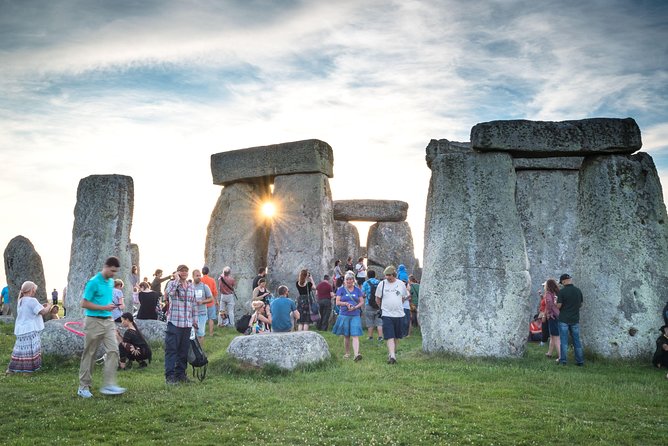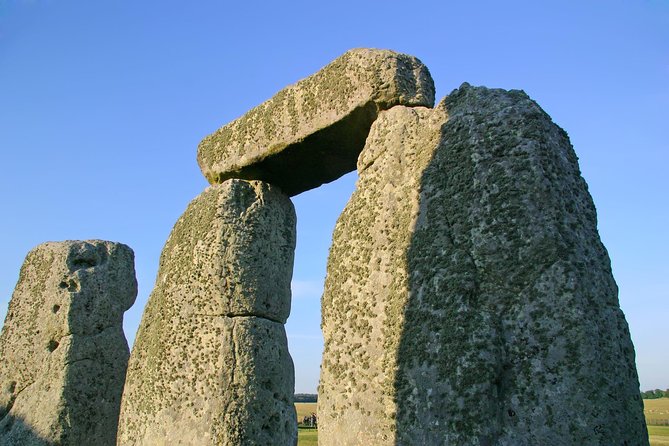- Home
- Discover London
- Stonehenge Half-day Tour From London With Admission & Snack Pack
Stonehenge Half-day Tour From London With Admission & Snack Pack
Description
More about Stonehenge
Planning a visit to Stonehenge? This iconic prehistoric monument in Wiltshire, England, is a must-see for history buffs and curious travelers alike. Standing proudly on Salisbury Plain for over 4,500 years, Stonehenge continues to captivate visitors with its enigmatic presence and rich archaeological significance.
Why Visit Stonehenge?
1. Witness a UNESCO World Heritage Site
2. Explore one of the world's most famous prehistoric monuments
3. Unravel the mysteries of ancient engineering
4. Experience the spiritual atmosphere of the stone circle
5. Learn about Neolithic and Bronze Age life
Getting There:
Located about 90 miles southwest of London, Stonehenge is easily accessible by car or public transport. English Heritage provides detailed directions for reaching the site.
When to Visit:
Stonehenge is open year-round, but the best times to visit are during the summer and winter solstices when special access is granted. For a less crowded experience, consider visiting during shoulder seasons (spring and autumn).
What to Expect:
As you approach the stone circle, you'll be struck by its sheer size and the precision of its arrangement. The largest stones, known as sarsens, stand up to 30 feet tall and weigh up to 25 tons. The smaller bluestones, transported from Wales, weigh up to 4 tons each.
The visitor center offers interactive exhibits, including a 360-degree audio-visual experience that transports you through time. Don't miss the Neolithic houses, where you can step inside reconstructions of 4,500-year-old homes.
Did You Know?
• Stonehenge aligns with the midsummer sunrise and midwinter sunset
• The site was built in several stages over about 1,000 years
• It's estimated that building Stonehenge took over 30 million hours of labor
Nearby Attractions:
Make the most of your trip by exploring other nearby Neolithic sites: • Avebury Stone Circle: A larger, more accessible stone circle
• West Kennet Long Barrow: An impressive Neolithic tomb
• Silbury Hill: The largest artificial mound in Europe
Visit Wiltshire's guide to Stonehenge and Avebury offers more information on these sites.
Tips for Your Visit:
1. Book tickets in advance to guarantee entry
2. Allow at least 2-3 hours for your visit
3. Wear comfortable shoes for walking on uneven ground
4. Bring a jacket, as the site can be windy
5. Consider an audio guide for in-depth information
FAQs:
Q: Can I touch the stones?
A: Generally, visitors are not allowed to touch the stones. However, special access visits are available outside regular hours.
Q: Is Stonehenge wheelchair accessible?
A: Yes, the site offers wheelchair access and mobility scooters.
Q: Are dogs allowed?
A: Assistance dogs are welcome, but pets are not allowed in the monument field.
Stonehenge isn't just a pile of rocks; it's a window into our ancient past. As you stand before these massive stones, you'll feel the weight of history and the pull of ancient mysteries. Whether you're a history enthusiast, a spiritual seeker, or simply curious about the wonders of the world, Stonehenge offers an unforgettable experience that will leave you in awe of human ingenuity and the passage of time.
For the latest visitor information and to book tickets, visit the official Stonehenge website.
What's Included
- 25% discount off Stonehenge guidebooks*
- Admission to Stonehenge
- Free snack pack (morning departure only)
- Transportation by Air-Conditioned Coach
Additional Info
- Public transportation options are available nearby
- Infants are required to sit on an adult’s lap
- Travelers should have at least a moderate level of physical fitness
- Please show this e-ticket to gain entry to this tour.
- This tour is unescorted.
- Download the audio tour in advance, please search for the ‘Stonehenge Audio Tour’ in your App store, until further notice.
- *During peak periods, vehicles without Wi-Fi may be used.
- Show your given wristband for 25% off Stonehenge guidebooks.
- The Moring tour finishes at Victoria.
- Due to driver's legal working hours restrictions, this tour will finish within a 2 or 3 minute walk of Gloucester Road Underground Station. This station is in Zone 1 and is three stops Eastbound on the Circle Line or the District Line to Victoria. The Piccadilly Line also runs through Gloucester Road, and is only 5 stops to Piccadilly Circus.
- Small luggage is allowed on the bus.






















